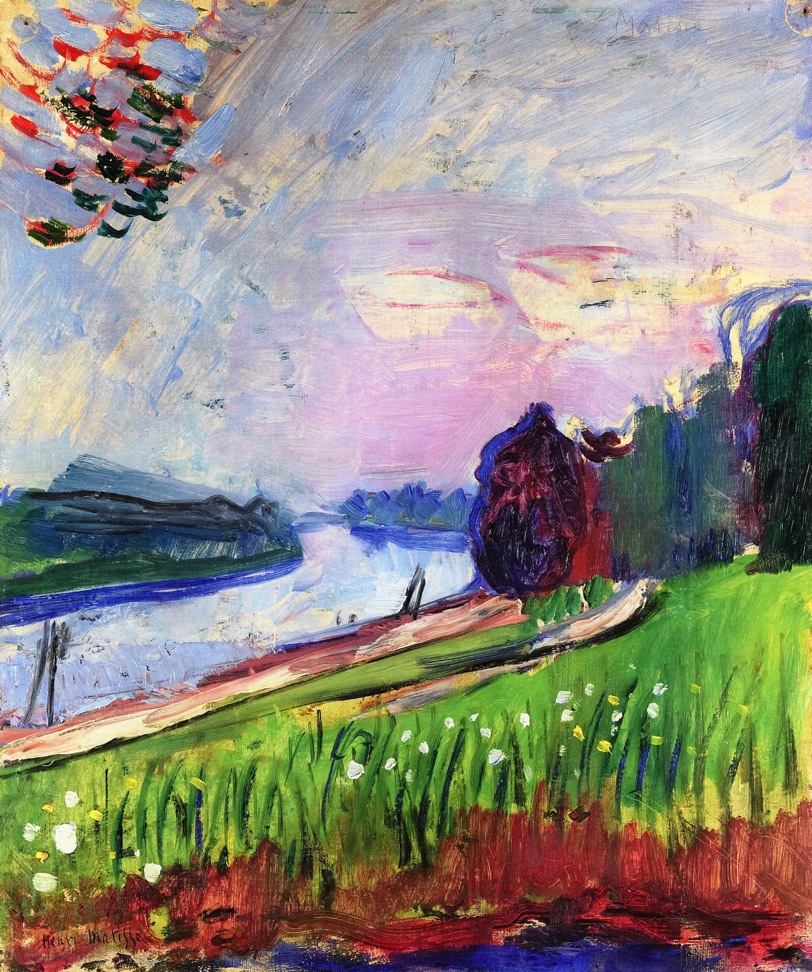Henri Matisse, Copse of the Banks of the Garonne, 1900
Henri Matisse (1869-1954) is one of the most prominent artists of the Post-Impressionist period. He is known for his extremely vibrant colors and his fluid lines. Matisse originally moved to Paris to study law, but after an attack of appendicitis, his mother brought him art supplies to occupy him while he recovered. Matisse described entering "a kind of paradise" and decided to be an artist. He studied at the Académie Julian under William-Adolphe Bouguereau and Gustave Moreau. Matisse's early works consist mostly of still lifes and traditional scenes, which nevertheless soon bear the marks of his unique style. Matisse explored Divisionism and Fauvism as he developed his style. Harmony in Red (The Red Room) (1908) is often considered Matisse's masterpiece, or at least one of them, and the greatest expression of his style and aesthetic. Copse on the Banks of the Garonne is a fascinating step in Matisse's development, as well as a beautiful landscape in and of itself. The piece includes Matisse's experiments with color, evident in the pink sky and trees that appear blue and purple. We also see the artist's loose brushwork and draughtsmanship used very effectively. Matisse utilizes his technique to convey movement in the wind, and the general buzz of nature. Although there is nothing moving in this painting, and no people or activities, this is not a landscape of serenity. Rather, it is one of great energy where the beauty of the landscape is alive with vibrancy.

No comments:
Post a Comment